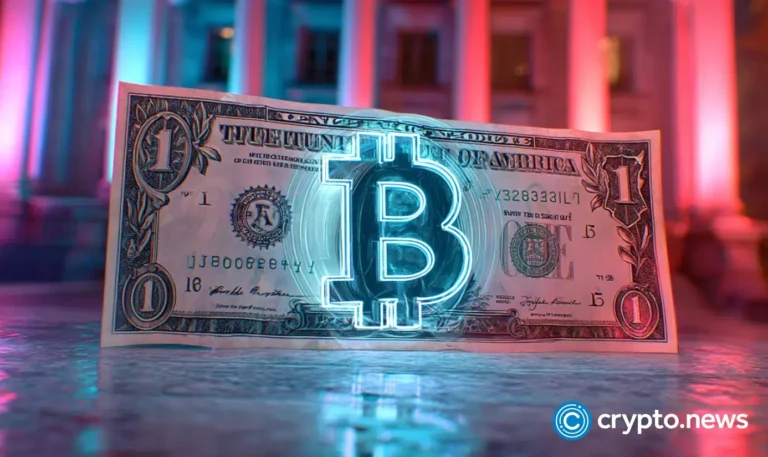
Mortgage-backed securities massively contributed to the 2008 financial crisis. According to some observers, Bitcoin, created as a response to this crisis, started to resemble MBS as a large part of the Bitcoin market is now represented by “paper” Bitcoin or sophisticated Bitcoin derivatives. How accurate is that? Should we get ready for another fundamental shakeout?
Crisis of 2008
The 2008 financial crisis was a product of several simultaneous misfortunes and disproportions. One of the factors that made it possible was the development of extremely complex trading instruments. Securitization is the term that describes the contractual debt-based pools of money related to these debts (mortgage, auto loans, etc) sold to third parties in the form of securities.
Mortgage-backed securities saw sharp traction, but they turned out to be not collateralized properly. Mortgages were given to people with little to no proof of financial solvency. MBS associated with subprime mortgages became the dynamite for the world economy during the housing bubble boom in 2007–2009. Banks, hedge funds, and mortgage lenders saw bankruptcies, liquidations, bank runs, etc.
The results of the 2008 financial crisis included a high unemployment rate, crashed markets, an inflation spike, a decline in household wealth, and the number of bailouts. The governments saved the banking system while most of those responsible for the crisis were not punished. An unknown innovator came up with an alternative electronic cash system, not controlled by the banks and governments, known as Bitcoin.
From Bitcoin whitepaper to “paper” Bitcoin
While Bitcoin is technically independent from any entity as its network is decentralized, governments and corporations eventually found a way to influence Bitcoin to some extent, as they have the power to funnel millions of dollars into Bitcoin.
As public awareness about Bitcoin grew, its price went higher. Investments from institutions and governments were mostly seen positively as they were to increase Bitcoin’s spot price and bring it closer to mass adoption. Soon, Bitcoin started to adopt traditional financial instruments to allow profit from bitcoins you don’t hold. In 2017, Bitcoin futures became available. Bitcoin margin trading was already in place by that time. 2024 saw Bitcoin ETF approval.
The introduction and growing adoption of Bitcoin derivatives created patterns that remind some of the MBS movements before the 2008 financial crisis outbreak.
These days, certain pension funds in the U.S., UK, and Australia invest in Bitcoin through ETFs, just as 17 years ago they were investing in MBS. Just like 17 years ago, Bitcoin derivatives are so sophisticated that risk management is limited. The same was the case with MBS when no one knew exactly who owned what, as the securities were bundled with other instruments and sort of blended. Today fear of missing out fuels institutional investors the similar way it was in 2008.
Academic researchers Rahool Kapoor and Natalya Vinokurova released a piece this March, in which they warned readers of inaccurate analogies. They write that comparing Bitcoin to gold is as risky as comparing MBS to bonds. Bitcoin is similar to gold in many ways, whether it is scarcity or high returns, but authors say that Bitcoin may fail the way MBS did after ungrounded trust in this asset mixed with FOMO.
These researchers don’t try to explain why many believe that Bitcoin is not only similar to gold but superior in many instances. Nevertheless, their criticism of the processes surrounding Bitcoin these days resembles some (rare) opinions across Crypto Twitter, signaling that too much paper Bitcoin on the market may end up badly.
Paper Bitcoin means that when two people use an exchange so that one will lend their bitcoins to another, the real exchange between the two may not happen. Instead, an exchange will display both persons as having these bitcoins. It distorts the data and engages people in trading uncollateralized assets.
Some believe that paper Bitcoin trading is the reason why the BTC price is still far from being one million or even half of it despite multi-million purchases by Bitcoin treasuries. However, it’s worth saying that Bitcoin treasuries use OTC desks to avoid immediate impact on the markets.
Some in the crypto community oppose Bitcoin treasures for various reasons, including centralization, paper asset trading, lack of usability, insecurity, etc.
The narrative surrounding Bitcoin has shifted from the Wall Street denial to a basis for another unsafe asset traded by it. Time will show how sustainable Bitcoin will be in the event that its derivatives fall apart. As of June 2025, only a few experts express concern about paper Bitcoin trading.
Some think that obligatory proof-of-reserves would have lowered the risks associated with paper Bitcoin. However, it requires changing the practice of how exchanges act. Others stick to Bitcoin self-custody and don’t trust their funds to Bitcoin treasury companies and other centralized entities.



